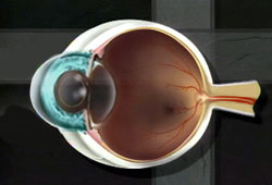Posterior Capsulotomy
A posterior capsulotomy is a non-invasive laser procedure to eliminate the cloudiness that occasionally interferes with a patient’s vision after cataract surgery. In modern cataract surgery, the cataract is removed, but a thin membrane that held the cataract is left in place to hold the implanted artificial lens.Leaving the capsule in place during cataract surgery is a great advancement because it allows the vision after surgery to be more stable and ensures fewer surgical complications. However, sometimes the posterior or back portion of the capsule becomes cloudy over time. This can be resolved with a quick in-office laser procedure.

A posterior capsulotomy is for those who:
- have had cataract surgery
- believe that their vision is being affected by cloudiness
What to expect on procedure day:
Once you have been checked-in, drops will be used to numb your eye; no injections or needles are used. When your eye is completely numb, an eyelid holder will be placed between your eyelids to keep you from blinking during the procedure.
Your ophthalmologist will use a YAG laser to create an opening in the center of the cloudy capsule. The opening allows clear passage of the light rays and eliminates the cloudiness that was interfering with your vision.

The entire procedure takes only about five minutes and you can leave soon afterward. The results of the procedure are almost immediate, however your vision will probably be a little blurry from the drops so someone will need to drive you home. Your doctor may prescribe anti-inflammatory drops for you to use for a few days following the procedure. Most patients resume their normal activities immediately.
Realistic expectations:
Serious complications with posterior capsulotomy are extremely rare. It is a safe and effective procedure, but like any medical procedure, it does have some risks. Going to an eye specialist experienced with the procedure can significantly minimize the risks involved with posterior capsulotomy.
If you and your doctor decide that posterior capsulotomy is an option for you, you will be given additional information that will allow you to make an informed decision about whether to proceed. Be sure you have all your questions answered to your satisfaction.
If you would like more information about this procedure you can make an appointment or contact the office for additional information.


